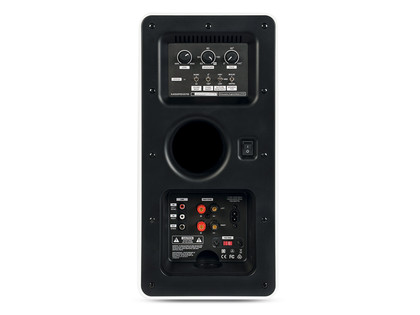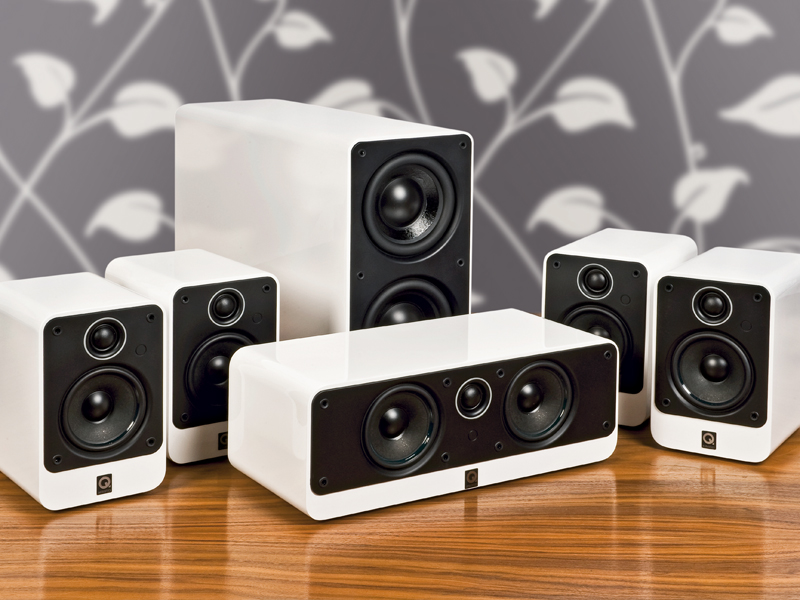TechRadar Verdict
Pros
- +
Detailed, compact satellites suitable for music and home cinema
- +
Alternative finishes/supports
- +
Tweakable sub
Cons
- -
Slightly rough sound when extended
- -
Lack of HF subtlety
Why you can trust TechRadar
Q Acoustics is a member of the Armour group – the umbrella name for a sprawling collection of brands, some of which it distributes while others are owned and operated in-house. Q Acoustics falls into the latter category.
In common with other budget and near price labels, the brand's speakers are designed in this country, but manufactured in the Far East, which offers the combined benefits of UK-friendly acoustic fine tuning, with the kind of pricing that is readily available in China.
There is another connection too: the Q Acoustics 2000 Series 5.1 owes much to Karl-Heinz Fink, a freelance designer of loudspeakers and well respected in the industry as something of a 'golden ears'.
The remit of the brand is what might be described as the affordable mainstream, comparable if you like to similarly priced models from the likes of Wharfedale, to give one obvious and very prominent example. The 2000 series, which is all new, is not avant garde design by any means, and it is unlikely to be the first name to spring to the mind of the fashion conscious. But it is clearly better looking than some of the previous ranges from this marque and more solidly built, too.
The 2000 series replaces the 1000 series, and is available piecemeal or as a pre-configured system, usually as the 5.1-channel package we're looking at here. But if you want to add extra satellites for 7.1 channels or more, or double the dose in the bass with an extra subwoofer (of which more later), this is easily done.
Shapeshifting flexibility
The design fundamentals are straightforward enough, but there is plenty of evidence of attention to fine detail, with the result that the package is easily set up to make the best of a range of room shapes and sizes.
Some interesting touches help ensure that the speakers don't intrude excessively, always a preoccupation with many buyers and their other halves.
The four main front and rear speakers are identical, two-way designs. The centre speaker is bigger – longer when used in its normal landscape orientation – to accommodate a second bass driver.
In all cases the tweeter is a 25mm woven polyester dome unit with ferrofluid cooling, while the bass and midband are handled by small 100mm units with cones made from a paper/mica mix. The latter adds some stiffness to the material, to reduce distortion levels compared to previous speakers from the company.
The speakers are rear vented, with removable foam plugs, the general rule being to use the bungs to help control the bass when the speakers are very close to the rear wall. And each speaker is equipped with good quality 4mm binding post terminals – no cheap and nasty spring terminals here – which are designed so that lead up cables don't add to the speaker depth.

Optional tilt and swivel wall brackets allow the speaker to be wall-mounted as an alternative to being stood on shelves; these come with detachable covers which hide the recessed terminal blocks on the bottom of the cabinets.
The subwoofer is a compact design, limited depth being made feasible by using twin bass drivers (and matching ports). It is a Class D design, which is standard practice at this price level being cheaper to implement, needing less cooling, and integrating, in this case, with a digital control system. This allows a full range of setup possibilities including the ability to adjust system tuning to accommodate music or home cinema, and to switch absolute phase (ie. whether the speakers 'suck' or 'blow' at the crossover frequency), and also to daisy-chain a second.
The benefit of using two subs includes a more even sound through the bass region and a higher level of bass when the tap is opened wide, but the bass does not extend any further into the low frequencies.
The system works really well for its modest asking price. The satellite speakers are identical, except for the centre one, which is similar to the front and rear speakers, but more importantly, they're all consistent in sound with each other.
You won't get great sound when the speakers are first used, though; there's a rough, rather 'boxy' quality straight from the factory, but they do loosen up within a reasonable period, and after a few hours at moderate volume levels, performance becomes smoother and more fluid, with far less obvious evidence of colourations.
Treble quality is still not this system's best feature: there's plenty of detail, but some low-level roughness. But the sound holds up well when heard from off the main front axis, which helps the sound fill the listening room in a consistent way.
The low frequency region – the upper bass and the midband – have real strength, and again this helps the whole system sound bold and dynamic. And while it's not the most sophisticated setup out there, it does offer clearly intelligible speech, a strong presence and good stereo imagery, plus impressive spatial effects in movies that demand them, such as the recent Star Trek.
The bass is a different matter as the satellites don't reach far into it, and the system is wholly reliant on the subwoofer to provide real depth and muscle in the lower register. In fact, although the Q Acoustics satellites are small, don't expect too much bass coverage from them; there are similarly compact designs whose bass reaches further.
The rated bass response of this speaker is given as 68Hz, but in practice I think this may be a tad optimistic. Of course the subwoofer plugs the gap, which is what it is supposed to do, but there is a suggestion of discontinuity around the crossover point between the subwoofer and the satellites, and as a result the lowest octave can sound 'slow' and out of character with the midband.
The optimum crossover settings is close to 100Hz, but the character of the sound changes so that the sound loses punch as the subwoofer takes over the reins.
I found the system highly dependent on how it is set up, though I applaud the design features that make setup changes easy to achieve. In particular, the various ports can be used with foam bungs or without, the general rule being that using them gives a slightly more damped feel, which tends to work better when the speakers are positioned close to walls.
More important are the various settings available on the subwoofer. The options are covered in the instructions, but my advice is not to finalise the system setup until the speakers are thoroughly bedded in.
A real movie goer
It's all down to that familiar three word phrase – value for money. I was never fully convinced that the system would double effectively as a music system, which is one of the maker's claims, but it ticks all the boxes for affordable home cinema.
It goes loud, sounds bold and dynamic and offers clear and distinct dialogue, while sporting respectable bass and attractive packaging.
Another plus point are the optional variants that could be a real pulling point in many design conscious homes, especially as they don't cost very much more than the standard finish.
Follow TechRadar Reviews on Twitter: http://twitter.com/techradarreview
